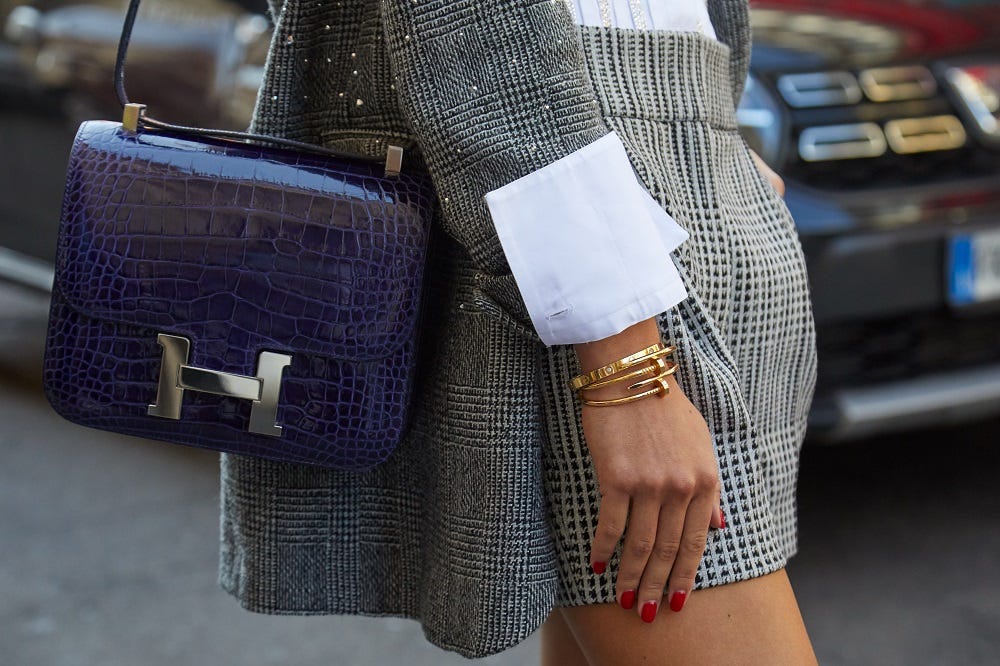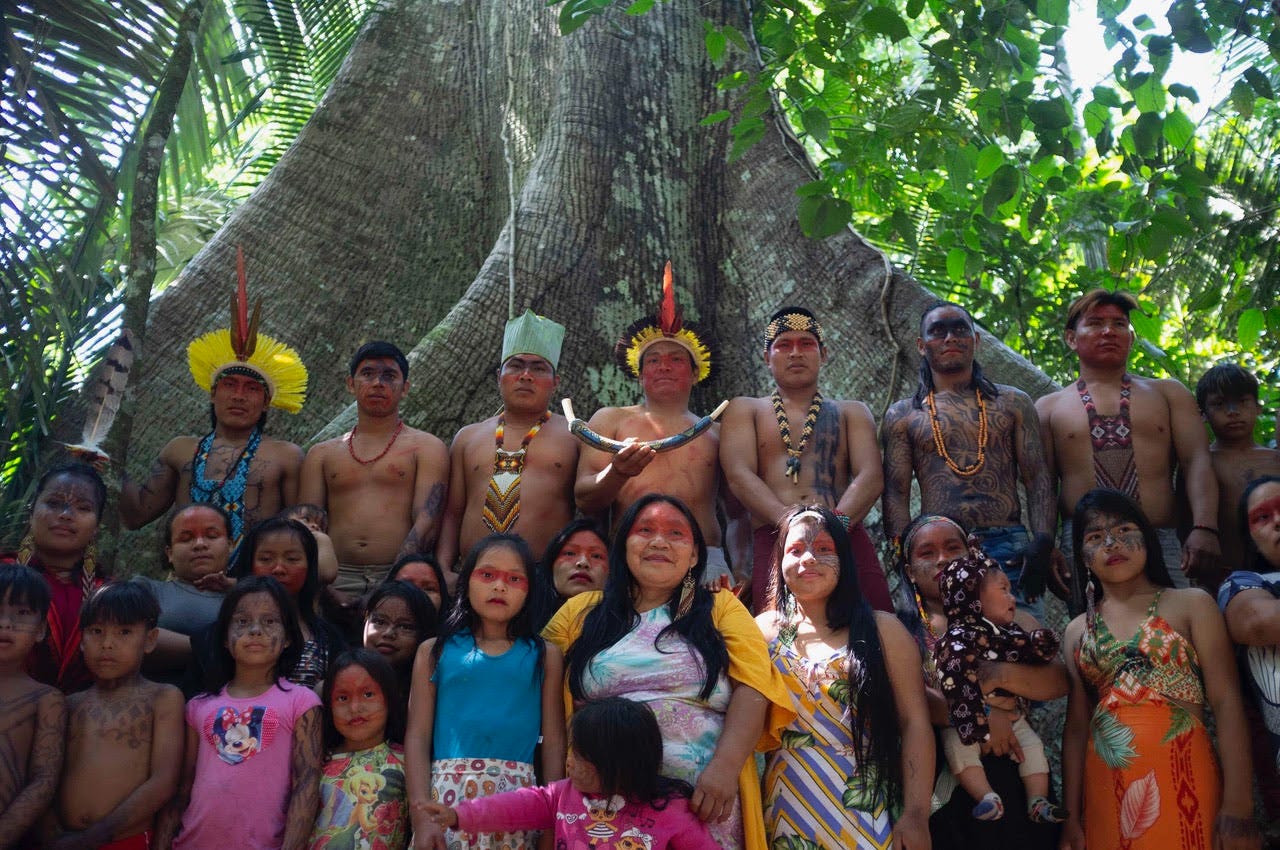Handbags, Hermès and how to tell a lovely story
Proof once again that fashion is about so much more than clothes.
Hello and welcome to my subscribers. This newsletter is a platform to encourage more sustainability in the fashion industry. If you would like to support this work, it’s only £1.50 a week. Paid subscribers are invited to exclusive events, starting with a swapping party in London later this month (details end of this bulletin).
Ready for a lovely story? Fashion, after all, is all about joy, about moments that put a bit of oh-la-la in your life, and this one’s a goodie. But first, some fashion news.
This week Hermès defied all economic odds to announce that revenue reached €3.38 billion in the first quarter, up 23 per cent on this time last year. Wow, what a powerhouse Hermès is. Nothing can touch it: its quality, its price tags and its status drive insatiable demand. How? Why? It seems the world can be burning around us, everyone’s on strike and no one can afford their gas bill, but when it’s all going to pieces, we’re reaching for spanky handbags. Maybe it’s a way of showing we don’t care; bags tell a story, and a smart, shiny, luxury one is such an excellent fuck you to the times we live in.
Today the average British woman owns 14 handbags and spends more than £6,000 on them in her lifetime. Luckily for all those with some guilty pleasures in their closet, luxury handbags now even outperform art as an investment, (vintage Birkins can sell for over $250k), leading fashion to create bags as art in themselves. In the excellent 2021 V&A exhibition Bags: Inside Out, all this was explored, featuring creations like Karl Lagerfeld’s ‘Lait de Coco’ bag in the shape of a milk carton and Thom Browne’s ‘Hector’ handbag, a lifesize replica of his dachshund.
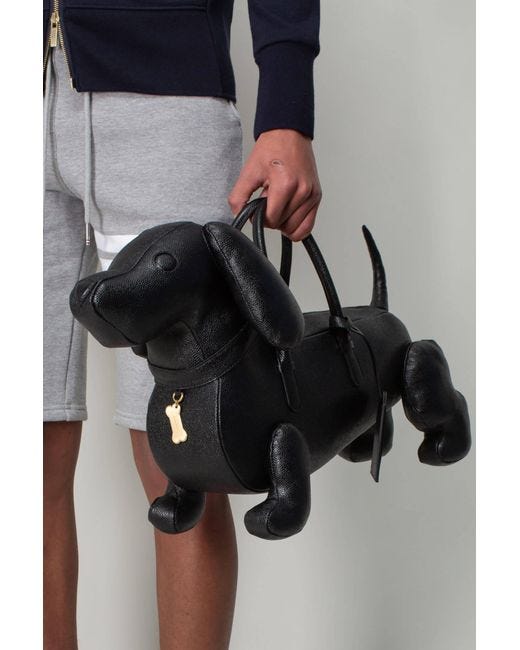

But not all status bags need be expensive. The New Yorker and Daunt Books canvas totes became instant conferrers of ‘urban intellect’, as did Anya Hindmarch’s iconic 2007 ‘I’m not a plastic bag’. Bags can project what we want others to see about us — whether it’s that we’re well read, campaigning for a better world or, like Gwyneth, we’ve got Rich Mom Energy and we don’t ****ing care.
Margaret Thatcher started all this. ‘Of course, I am obstinate in defending our liberties and our law — that is why I carry a big handbag,’ as she once famously said. She knew that what she wore was as valuable a semaphore as what she said and did - as Charles Moore put it in her biography, her handbag became ‘the sceptre of her rule’. Whatever you make of her politics, the lady could work her fashion. The It Bags of the noughties picked up where Maggie left off. As Fendi Baguettes, Balenciaga Lariats and Gucci Horsebits were sprayed everywhere from Colleen Rooney’s pushchair to SJP’s brunch, the fuel for the LVMH and Kering growth was lit, and we became a nation of bag snobs.
Me? I had a Mulberry Alexa, in salmon pink. I once had to go to Clarence House for a briefing on the Wills and Kate wedding and turned up late at the wrong entrance with the wrong ID. No joke - the policewoman on the door let me in because we bonded over the Alexa I was carrying. Turned out she was saving up for one on her police salary.
Mulberry was the brainchild of Roger Saul, a British entrepreneur from Somerset who understood the value of quality, craftsmanship and great product design. He lost control of the business in the early aughts and the brand has since suffered changeable fortunes as successive CEOs have tried to drive growth by inflating prices, charging into new markets and not really worrying too much about design and ethos. It lost that brief moment of cool when everyone from WPCs to pop stars wanted one.
Which brings me to today’s lovely story. It’s told to me by Roger’s son, Cameron, who grew up packing boxes in the Mulberry stockroom, and was sent to Uganda on his gap yah for a bit of balance. The Uganda trip changed his life.
“I had my heart blown open by working in such a different context. Where your day to day life is about survival. I was volunteering in a project that used creativity to engage teenagers about sex education, sanitation and hygiene. We didn’t do it in classrooms, instead we were using music, poetry, dance and song to get people thinking in different ways.”
That experience, that you can spread a message if you are creative enough, inspired him to found his company Bottletop. It made handbags, and launched as a collaboration with Mulberry, (Nepo alert!). I remember the launch, but the 20something me was more interested in Alexa Chung than bottletops at that stage. Luckily for him, there were plenty that preferred bottletops, and his brand has grown and grown, raising over £2m for NGOs and impact projects, quite apart from the livelihoods he has created. Soon the UN asked him if he could do the same for the SDGs (Sustainable Development Goals), and for them he launched TOGETHERBAND.
“The thread of my work is using creative culture to inspire change,” he says quite seriously. “And how physical products can play a role in change, because they create a space for a conversation.”
Here’s how the products work: the bottle tops are collected by ‘catadores’, or ‘trash pickers’ - often homeless people - and are bought by the kilo. Then the tops are sorted, washed, filed and polished, and sent off to the ateliers that Bottletop have set up in regions where they identify need. This began in sub Saharan Africa, and there are now ateliers in Kathmandhu, Salvador and the Amazon, Brazil. The ateliers are given equipment, and the natural crafts of the community are leveraged. Bottletop provides the orders, the funds and the support. The latest collection comes from the Amazon atelier, which is run by the Yawanawá tribe. Cameron was introduced to them by Lily Cole, whose jewellery he admired when he ran into her at a birthday party. Lily had bought it from the Yawanawá tribe in Brazil, and Cameron was straight up the Amazon in a paddle canoe.

Indigenous peoples protect over 80% of our remaining biodiversity, and finding ways to empower them in terms of livelihoods and incomes is of critical importance. The Yawanawá own over 250,000 hectares of forest in the southwest corner of the Amazon region, but their situation is precarious. They need to travel 4 hours down river to get medical supplies and the fuel costs are paralysing. “The pressures on them are now immense, there are so many other interests now permanently circling, whether that’s for timber, or soy, or whatever the financial interests are that abound,” says Cameron. “All of the data on the Amazon is that the areas that have been best protected are areas where indigenous peoples live. This is because they understand the relationship to nature; these aren't just people that happen to live there. The forest is standing because of them.”
This Amazon atelier is only a year old, but already it is having “a transformational impact for the community,” says Cameron. “It employs key heads of families to generate livelihoods, when they might have to leave the forest and find work in urban environments.” Bottletop were able to intervene in two medical situations recently, creating a symbiotic relationship where the Yawanawá’s guardianship of the environment begins to feel valued. “These are people that are putting their lives at risk to keep forests running, not just for themselves but for the rest of us in terms of buffeting climate change. So they should be our number one priority.”
Hold that thought, because as well as supporting communities, what these products do is create conversation. “Products have the power to be advocacy tools,” says Cameron. And this is how TOGETHERBAND came about, a product line of 17 friendship bracelets, each representing the 17 UN SDGs.
(For those sustainability students not keeping up at the back, these are the 17 goals that the UN set to define human progress while protecting the planet. Every country is signed up to them. They range from eradicating poverty to peace and justice; the right to education and gender equality to decent economic growth).
They are sold in pairs, so you can buy one for yourself and one for someone you love - and the idea is the goal you choose for them becomes a conversation piece. David Beckham, Naomi Campbell, Halima Arden and Lewis Campbell are all ambassadors.
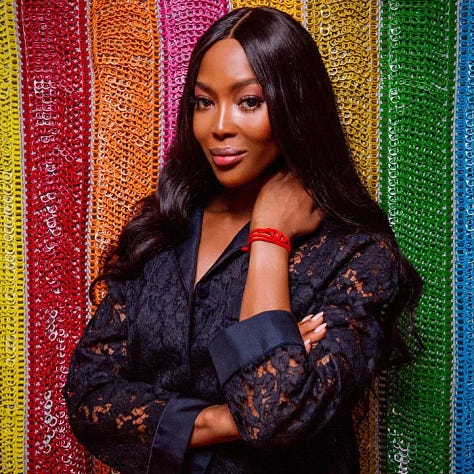
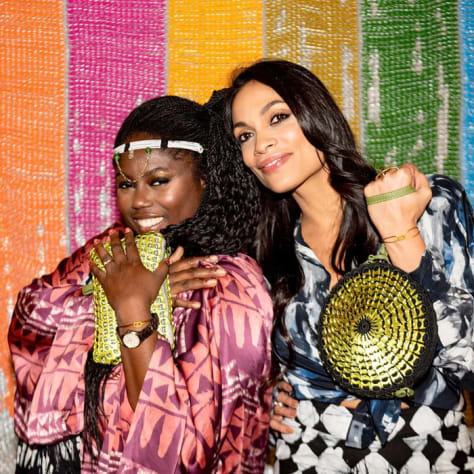

The Yawanawá are also making TOGETHERBAND friendship bracelets, and have customised their designs with açaí berries: açaí grows naturally in the rainforest which the tribe harvest for their health benefits. The seeds are dried, polished, drilled, hand dyed and woven together on thread from Parley Ocean Plastic, the company that intercepts plastic from coastlines and marine environments. Leather is zero deforestation, (sourced through a supply chain that ensures no leather is made from cattle that are part of the deforestation problem). Finally, the YAWA designs also feature a single seed cast from confiscated illegal firearms through the Humanium Metal Initiative. If all that is not a conversation starter, I’m not sure what is.
“The bands are a straightforward design, so are a great way to go into challenging environments and build logistical infrastructure to get an atelier set up, before we go on and create more technical design with that community,” adds Cameron.
Tashka Yawanawá, Chief of the Yawanawá has this to say: “Our precious forest is under great threat. It is burning. We are partnering with BOTTLETOP to create these designs as a symbol of hope for the future of the forest and our community. With this bag, we can preserve our community's cultural heritage and craft and provide a livelihood for our people. Help us protect mother nature. Help us protect our home.”
There’s a story that Hermès is telling that has many of us in its grasp. It’s one of quality, craftsmanship and luxury. More power to Hermès - with their artisan products and their eye on the highest quality materials, they cannot help but be in touch with the sustainability of the resources and communities they touch. These pillars of craftsmanship and quality have formed the bedrock of Hermès’ growth: not for them splashy influencer campaigns or fashion shows in the desert. It’s probably not a coincidence that the Greek god Hermes carried a money-bag to signify his role as the god of riches.
BOTTLETOP and TOGETHERBAND are also trying to tell a story. “Quality matters, from the way people relate to products, and how products are critical advocacy tools,” says Cameron. “Brands have power to communicate around all manner of things. It’s up to the brand author to decide how you want to use your platform to communicate, and how are your products going to help to tell stories.
“And for us, it's with bottles. It was completely instinctive to me from day one that we would design in a way that would create skills and livelihoods for economically challenged communities.”
Until next week,
Tiff
The Rule of 5 campaign encourages us to buy less - but that doesn’t mean you can’t still have fun with fashion. Find out more here:
The Great It’s Not Sustainable x Noon Swapping Party
On Wednesday next week, April 26th I will be holding a swapping party with the wonderful community at Noon, at the Rosewood Hotel, Holborn in central London. This event is open to all my paying subscribers so please hop below the paywall below to register. If you would like to come, you can always upgrade your subscription here. Warning, the guest list is extra, and the swaps will be amazing.




